Rural revivals / Global
Off the beaten track
Seaweed farming in Patagonia, cave-dwelling in Italy and preserving ancient buildings in Japan: these hoteliers are reviving once-forgotten corners of their native lands with tasteful tourism for travellers seeking authenticity.
01
Bahia Bustamante
Argentina
Somewhere in the middle of the scrub-studded Patagonian desert, bordered by hundreds of kilometres of empty sandy beaches where the Atlantic Ocean meets the terra firma of South America, lies the old seaweed and sheep-farming village of Bahía Bustamante. Not a living soul is in sight on the dirt road leading to it, save the occasional lone gaucho on his horse.
From a distance the village looks small but that’s deceptive: it is more than 40,000 hectares of unspoiled outback, dotted with well-kept ocean-facing houses. But it wasn’t always like this. The village was deserted for decades until entrepreneur Matías Soriano left Gaiman to revive the town. In 2000, to open it up to the kind of traveller who wants to avoids crowds, he transformed a handful of old whitewashed houses once used by algueros (seaweed harvesters) into guestrooms.
Soriano represents the third generation of his family to settle in Bahía. His grandfather, Don Lorenzo Soriano, moved here from Andalucía in 1953 to gather seaweed. Bahía eventually became the world’s largest seaweed-farming village, with 400 workers living here almost full-time. The industry remained strong until the 1990s, when it collapsed following oil spills in the Atlantic, while Argentina dived deep into an economic crisis.
“It was almost cheaper to import seaweed from Asia for processing than to gather and sell it here,” says Soriano. “For years Bahía was abandoned, apart from three workers who stayed on to protect it from squatters. When a large piece of our land was integrated into the National Marine Park conservation area, I had the idea to open Bahía again as a hotel for visitors. I restored the village and its seaweed industry little by little and, more and more, workers have been coming back.”
Ten men are once again at work in the small family-run factory, with 15 more employed at the hotel and its restaurant Proveeduría, which serves mouthwatering parrilla (charcoal-grilled meat). Once more, music can be heard playing from the casitas, laundry is drying in the crisp air and locals come and go. For Ludmila and Pedro Britos, a young couple who work in the village, the hamlet offers a second chance amid the country’s economic crisis. When Soriano isn’t busy managing the community he takes guests out on his boat to visit the rock pools and spot sea lions and the colony of 100,000 resident Magellanic penguins.
He has plans to expand the village by opening a school and enlarging the small shop that sells everything from bottles of malbec to handmade knitted ponchos. Recently Soriano and his wife, Astrid Perkins, planted vines and olive trees to create even more opportunities. “We’re harvesting seaweed, collecting sea salt, prodtucing wine, organic meat and vegetables, and all this in the middle of a windswept steppe by the ocean,” says Soriano. “My dream is to prove that wildlife and nature production and protection can be a great business.”

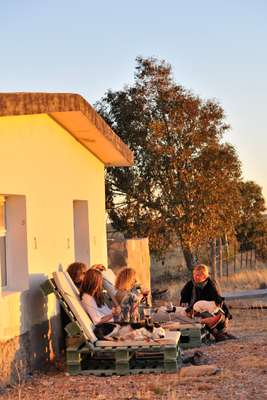
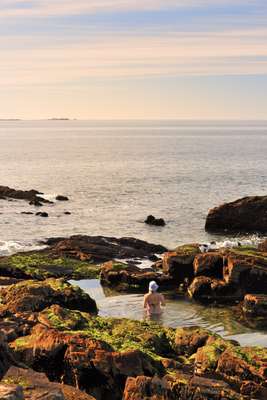
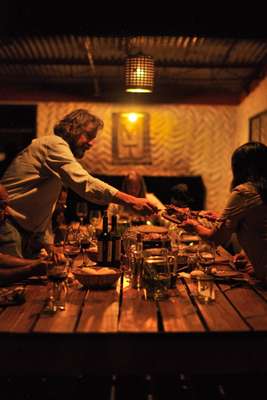
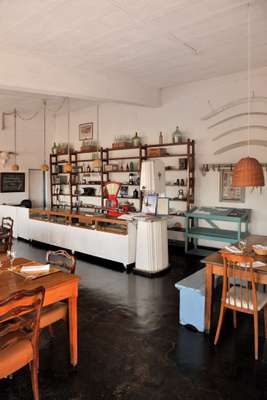
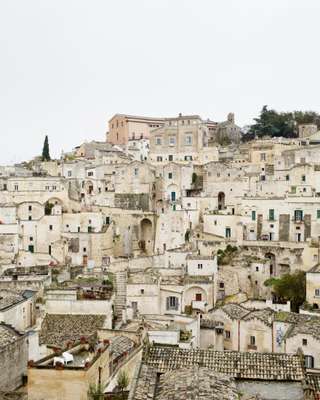
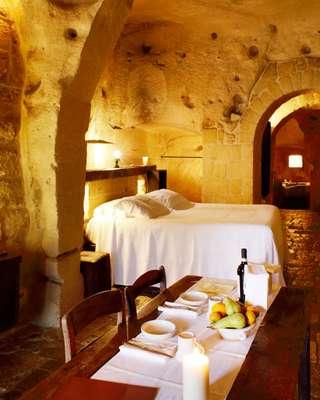



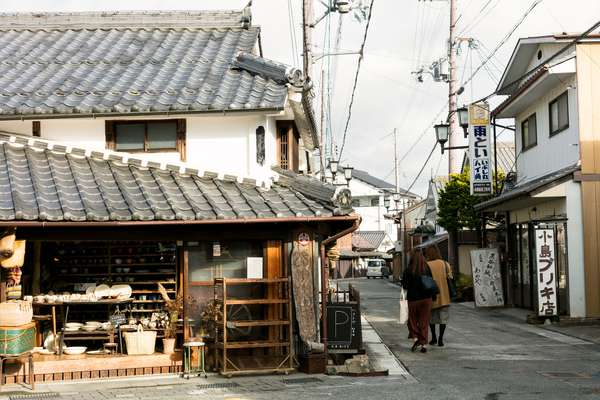
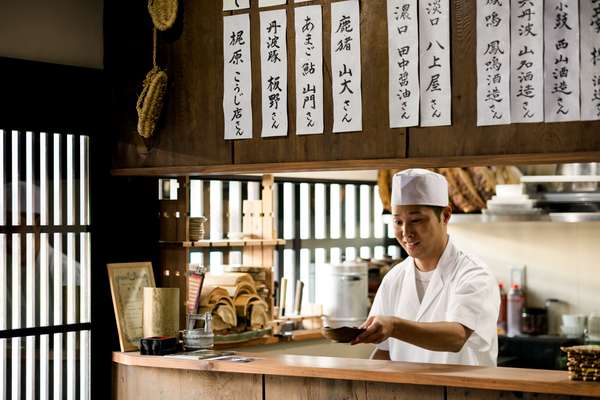
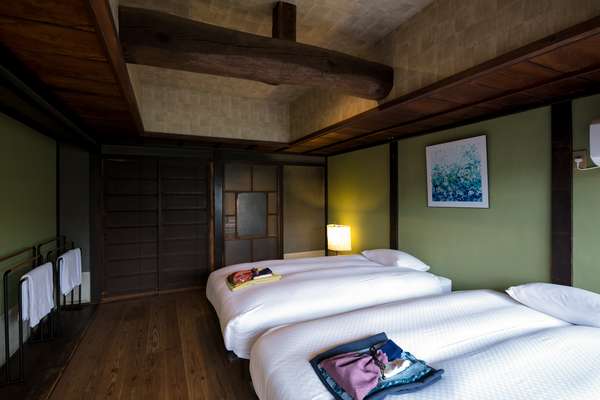
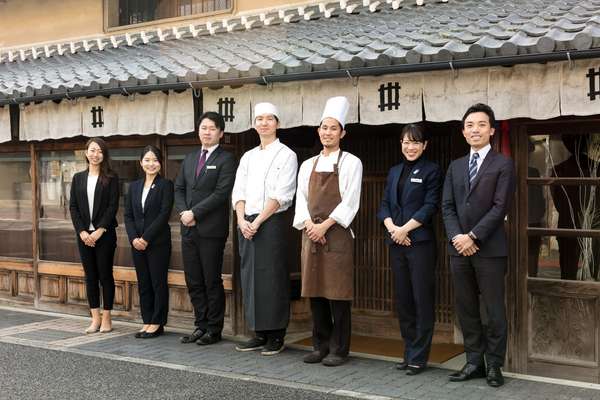

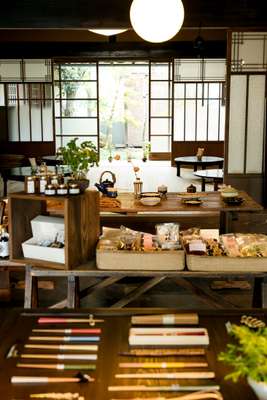
Soriano doesn’t consider living in this remote place to be a disadvantage. “We are privileged to live surrounded by pure nature and to have this kind of freedom. We have a responsibility to protect, establish strong allies in the conservation community and keep working hard to create more meaningful jobs,” he says.
The fact that time here has stood still for several decades is a blessing in disguise. Bahía remains one of the last unspoilt places in Patagonia, whose well-managed, small-scale tourism is a blueprint for revitalising other secluded parts of the world.
bahiabustamante.com
02
Matera
Italy
Matera’s Sassi is an area of extremes. A prehistoric puzzle of limestone caves carved into a towering mountaintop, it was dubbed the “shame of Italy” in the 1950s for the antediluvian lifestyle of its impoverished inhabitants. The Bronze Age settlement had no public drinking water and a scourge of malaria until it was evacuated in the postwar period. When Unesco declared Sassi a World Heritage site in 1993, it harboured drug dens and illicit squatters. But from that moment on, Matera seemed more like a long-overlooked opportunity. Now it has been named the 2019 European Capital of Culture.
One site above all has become the symbol of the town’s rebirth: the Sextantio Le Grotte della Civita. The hotel, which opened in 2009, transformed a portion of the village’s neglected stone grottos – many of which dated back to the Paleolithic age – into 18 candle-lit guestrooms decorated with recouped local furniture.
“Globalisation is making places lose their identity but poor places have held on to theirs,” says Daniele Kihlgren, the founder of Sextantio, who studied philosophy before running hotels. “There are travellers out there who are looking for the kind of things that tourism typically destroys. What make these places beautiful are these traces, these sediments, of human existence.” Sextantio is part of the albergo diffuso (“scattered hotel”) movement originally conceived by Giancarlo Dall’Ara, who called for the revival of Italy’s derelict towns through hotel developments. The goal is to kickstart tourism. Kihlgren’s idea to bring luxury to Matera’s caves brought a wealth of attention to the city and has been so well received that he is expanding the hotel with two more spaces by 2020: a sprawling network of caves and a 17th-century palazzo.
Matera’s renaissance has brought 2,000 residents back along with new businesses and opportunities for natives, including the 20 who work at the hotel. “Tourism is bringing the young generation back to Matera,” says Michele Centonze, Sextantio’s head of sales and marketing. “We’re the ones creating alternatives. It’s no longer about waiting for the government to do something for us.”
Mario Daddiego has been handcrafting ceramics in the caves for decades and can hardly believe the change. “Today everyone knows that Matera exists,” he says.
legrottedellacivita.sextantio.it
03
Sasayama
Japan
Jokamachi Dori is the kind of picturesque street that travellers to Japan are longing to find. The small winding thoroughfare in the 400-year-old castle town of Sasayama is lined with old homes and shops. The town stretches out, fringed by persimmon trees, bamboo groves and rice fields. Though it’s only an hour by car from the cities of Kyoto, Osaka and Kobe, Sasayama is a delightful relic of a gentler time; it is renowned for its black soy beans, yams and matsutake mushrooms.
Despite its many charms, Sasayama is a victim of rural depopulation – an issue all over Japan. As young people are drawn to the big cities, houses lie empty and shops have closed. “It’s a problem,” says Toshiaki Imamura, a community leader. “There are many buildings of cultural and historical significance that have little or no economic value. If we don’t communicate the importance of preserving these buildings they’ll just be knocked down and sold to developers.”
But a once-bleak picture was redrawn a decade ago with the arrival of Note, a non-profit organisation set up by Yukio Kinno, who believed that the remarkable concentration of traditional buildings in Sasayama was an asset. “We realised that, by restoring an old property, we could do everything, from boosting tourism to farming,” says Ayako Tamagaki, Note’s project manager. So the organisation spent ¥180m acquiring five historic properties and turning them into luxury accommodation run by Valve management under the Nipponia brand name. It is rare for urban dwellers to experience such carefully renovated historic homes.
The hotel project has encouraged other businesses to open too. Yukihiro Hosotani moved from Tokyo to Sasayama two years ago to open Breath & Roy, a craft shop and café in a beautifully refurbished building a few doors from Nipponia. “I love this place,” he says. “We’re lucky here – we’re close to snowy hot-spring towns and the warmer climes of Setouchi to the south. And it’s hard to find a town with these old buildings nowadays; people from Kyoto come here to escape the crowds at home.”
Tomoaki Maekawa, a 35-year-old chef, opened his own Japanese restaurant at the front of one of the Nipponia properties in 2017. Born and raised in Sasayama, Maekawa trained at a restaurant in Kyoto but dreamed of returning home. “I always wanted to open a place here,” he says. “The ingredients from around here are so good. I really like the sundried rice and ancient vegetables and I buy deer and boar from a school friend who is a hunter.” Married with two young children, he’s showing that it’s possible to reverse the move to the cities if help is offered. “The Note project is great,” he says. “I’m so happy they’re using what we already have rather than building something new.”
By spring 2019, Nipponia will expand to 10 buildings and 24 guestrooms. Note has also begun to restore Sasayama’s historic centre. Following its success here, Nipponia – in partnership with Note – is taking on projects across Japan, each in a property that might otherwise be demolished. “We’re so grateful,” says Imamura of Note’s work in Sasayama. “New people are discovering the city’s charm; it’s breathing life into the area.”
sasayamastay.jp
Land of the rising scrum
Done well, tourism can rescue a town; taken too far, it can harm its identity. Ten years ago, when Japan had few visitors, no one thought it would one day suffer from an excess of tourists. Now “tourism pollution” is a concern. The Japan Tourism Agency is even conducting a survey on “overtourism”. In 2010, Japan played host to 8.6 million visitors; by 2020 the government aims to attract 40 million.
The speed of the increase is a problem and many tourists have a similar itinerary; destinations such as Mount Koya are bursting at the seams. Building an international tourism industry is a balancing act. As Sasayama shows, it can provide a vital boost to a stagnant local economy but too much can be damaging. The trick is to encourage tourists to venture beyond the “greatest hits” into lesser-known places where they’re more likely to find the authentic Japan they’re looking for.


